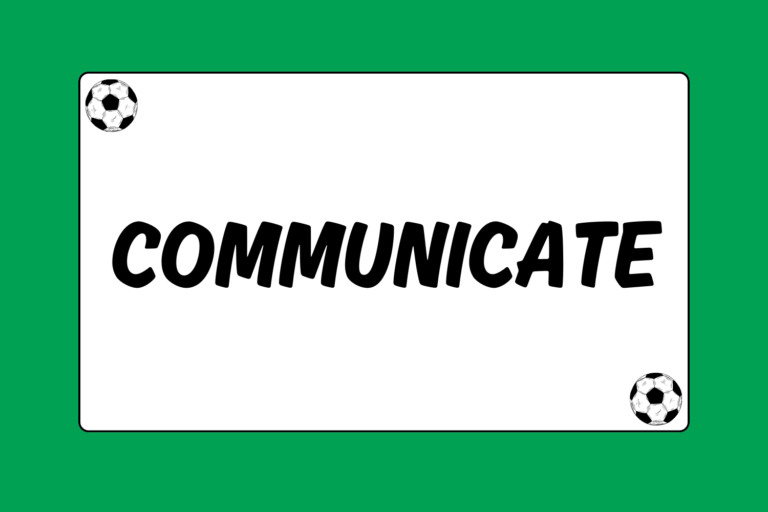In soccer, set pieces can easily create a particularly strong scoring opportunity. But they don’t just happen by accident. Set pieces usually result from aggressive play in the offensive end, leading to fouls or clearances out of bounds, and can come in the following types:
- Free direct kicks
- Free indirect kicks
- Penalty kicks
- Corner kicks
- Throw-ins
- Goal kicks
Coaches will design specific plays or sequences to be used in each of these situations. Here are a few examples set play-specific strategies:
Free Kicks
There are several free kick variations, designed to give players open space for a shot. When the ball is too far away for a clear shot – or for indirect free kicks – a set play is usually a good idea.
The most common free kick set play has two players line up to take the shot. It’s helpful if one is a lefty and one is a righty, so that the players are lined up at different angles to the ball. This forces the defense to concentrate on both players, and leaves them vulnerable to fakes or run-bys from either player.
Another strategy is to line up one player next to the ball, and another ten yards back for a run-up to strike the ball. Defenses are accustomed to the player next to the ball tapping it for the sprinting player, and will often flinch if the striking player fakes and runs over the ball. A quick touch or a backwards pass to a third player who is waiting to take the shot will keep the defense off-balance.
Chip Over the Wall
On an indirect free kick, a quick chip pass over the defensive wall to a sprinting teammate can often lead to a quick volley on goal.
- The chip has to be tall enough to get over the wall, but with enough loft that it doesn’t go all the way to the goalkeeper.
- It’s helpful if only one forward sprints behind the wall, so that the entire defense isn’t drawn into the penalty area.
A quick touch from a teammate to begin the play also helps, since the other offensive players can’t move until the first touch.
Corner Kicks
Every player has a specific role during a corner kick. It might be lining up to take the kick, making a run to the near or far post, screening a defender, or acting as a decoy. As with any set play, it’s important that each player knows his role, and those of the players around you. Every player in the offensive zone is an integral part of a successful set piece.
Corner kicks come in four varieties:
- An outswinging kick: A corner kick delivered so that the ball curves away from the goal. This gives strikers standing at the top of the box a chance for a volley or quick strike on goal.
- An inswinging kick: A corner kick delivered so that the ball curves in toward the goal. This gives players sprinting toward the net a good chance for a header into the twine.
- Short corner: A quick pass to a teammate near the corner. This sets up a chance for a give-and-go with the initial player lobbing a pass toward the goal or the top of the penalty box.
- Pass Back: A safe pass back to a midfielder along the wing to set up a pass from a different angle.
The best corner kick set pieces use misdirection or subtle screens to create space between teammates and defenders. They begin with a signal from the man taking the kick and usually involve active cuts to or away from the net to free a man for a quick strike.
Corner Kick Screen
A simple corner kick screen sends three men in unison from the top of the penalty area to the near post along the six-yard box. A fourth player sprints to the back post, cutting between the three advancing players. The cut should be subtle and well-timed with that of the other three forward players; ideally, the fourth player will be able to lose the player defending him in the commotion, which frees the player up to take a shot.
Also, the screen shouldn’t be too obvious, or obstruction can be called. An inswinging corner, a well-timed sprint, and a decisive strike on the ball can often yield a goal.
Corner to the Near Post
A rough reversal of a corner screen, the near post corner uses two players to set a mini-wall in front of the goal. Sending another player to the back post can occupy an additional defender or two. The two players setting the wall must hold their ground, using their backs to block out defenders trying to push from behind.
The player taking the kick will look for two forwards sprinting to the near post. Sending the players one just after the other makes it so that the inswinging corner doesn’t have to be delivered perfectly to get a good touch on the ball.
Mental Edge
It’s helpful to move quickly when setting up a corner or other set piece. By moving with tempo, defenses don’t have time to set up assignments, making it possible to catch a team unprepared for a quick pass or shot.
Advantages of Running Set Pieces
Successful teams often score many of their goals on set pieces, and coaches usually emphasize them in practice for this reason. Practicing specific plays and strategies will make it much easier to score off of a dead-ball or direct kick; good offensive teams usually find that they often get rewarded with frequent set play opportunities.
There are many advantages to set pieces:
- Opponents have to stand at least ten yards away from the ball.
- The ball is stopped so that it can be easily controlled with the first touch.
- Many attackers can move toward the goal at once.
- Players can arrange themselves on the field based on their individual strengths.
- Teams can practice set pieces over and over again until they have them memorized.
Most importantly, set pieces give the offense the advantage of knowing where the ball will go next, forcing the defense to react. Any time the defense doesn’t know what’s coming, it is much easier to put the ball in the back of the net.
Mix it Up
It’s best to experiment with a variety of set pieces — both in practice and during games — to make find the maneuvers that will work the best. Don’t settle for one or two plays that defenses can sniff out early. Also, vary your speed and tempo, and give defenses different looks prior to the first touch. This way, you’ll be sure to keep the defense on their toes.





